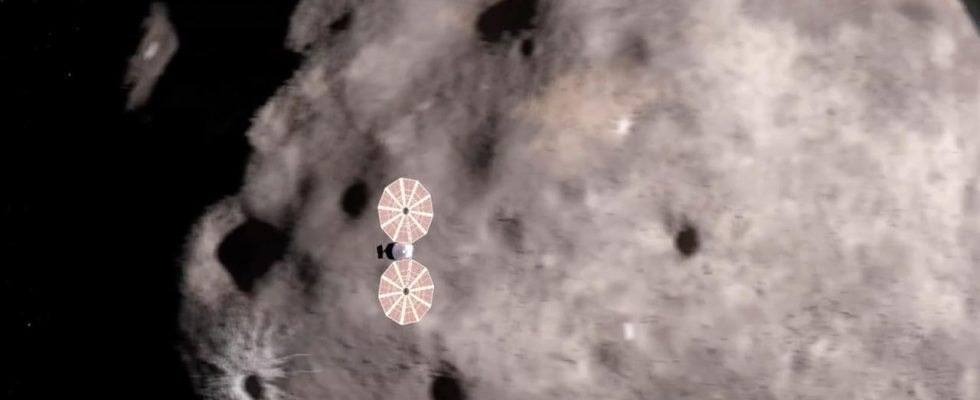The dress rehearsal was a success: NASA’s Lucy space probe successfully flew past its first asteroid. Now we move on to the Jupiter Trojans to find out more about the formation of the planets.
NASA’s Lucy probe has visited its first asteroid. The probe flew past the asteroid Dinkinesh about 400 kilometers away and successfully completed the maneuver, the US space agency said. According to NASA, it will now take about a week to send all the data collected to Earth.
Dinkinesh, less than a kilometer in diameter, is the first of about ten asteroids that the probe will study. And the flyby was primarily a test of whether the scientific instruments on board the probe were working. Their actual target is the asteroids of Jupiter.
New insights into the formation of planets
Lucy was launched in 2021 from the Cape Canaveral spaceport in the US state of Florida. The more than 14 meter long probe, which is powered by fuel and batteries rechargeable via solar cells, is intended to fly closely past seven of the so-called Jupiter Trojans: Eurybates, Queta, Polymele, Leucus, Orus, Patroclus and Menoetius – all named after protagonists from the Ancient legend “Iliad” by Homer.
The Jupiter Trojans are asteroids that orbit the sun in the same orbit as Jupiter – one swarm precedes it, one follows it. They are considered “fossils of the formation of planets,” which is why NASA hopes the mission will provide new insights into the formation of planets and our solar system.
In addition, Lucy will be the first probe in the history of space travel to return close to the Earth three times in order to obtain support from Earth’s gravity for its flight. The mission is scheduled to last twelve years, and Lucy is expected to cover a total of around 6.5 billion kilometers.
Beatles song as namesake
The probe’s name is taken from the Beatles song “Lucy In The Sky With Diamonds”. It is said to have blared from a cassette recorder when researchers discovered parts of the skeleton of a female pre-human in the Ethiopian Afar Triangle in 1974. The find proved for the first time that the forerunners of today’s humans were able to walk upright around three million years ago.
The fossil – and now the NASA probe – was nicknamed Lucy. The reason, according to the US space agency, is simple: “Just as the Lucy fossil provided unique insights into human evolution, the Lucy mission promises to revolutionize our knowledge of the formation of the planets and the solar system.”

